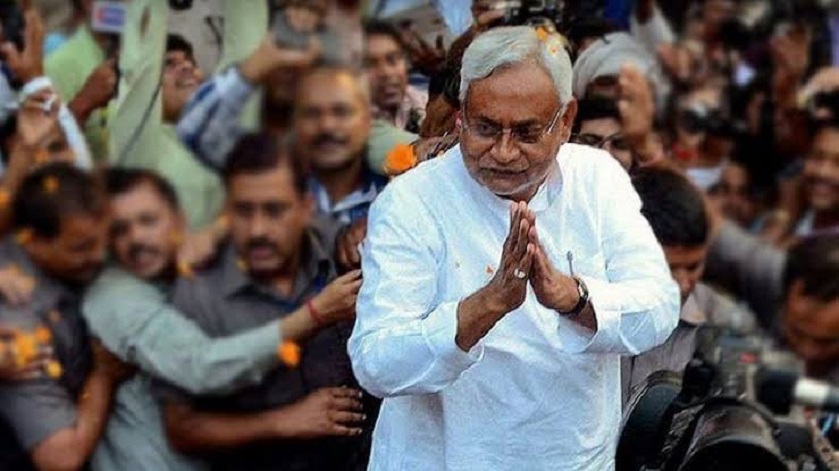
As we look forward to the 2024 polls, Bihar chief minister has once again ditched the BJP. Is he seeing something that other politicians don’t?
FOR the third time since 2013, Bihar’s chief minister Nitish Kumar has switched sides: from the BJP to the RJD, back to the BJP and now back to the RJD. And along the way, Kumar has shaped and dictated Bihar’s politics, even while support base of the JD(U), his party, has dwindled. In last year’s Assembly polls, JD(U) was the third largest party. But despite that, Kumar was chosen as the chief minister by the ally BJP, lest he goes over to the RJD, the party of Lalu Prasad Yadav which is the largest single party in the state. But true to his form, Kumar eventually did He is now Bihar chief minister as part of the three-party combine of the RJD, Congress, and his own Samajwadi party.
Where does Kumar go from here? The question has generated a lot of interest. Some analysis of his latest move has focused on its implications for the 2024 general election. Kumar is being touted as a potential opposition leader to take on Prime Minister Narendra Modi. Speaking to the media soon after leaving the NDA, Kumar reinforced this view by reiterating his desire to work for opposition unity, a project he couldn’t accomplish in his previous stint as a major opposition leader. Would he pull it off this time around? The chances remain moot. In fact, his ability to do so may be more diminished now than ever before. Kumar may continue to be a nationally-known high-profile leader, but the support base of his party in Bihar has considerably depleted, affecting his standing as a credible political opponent to the BJP.
But, at the same time, it would be a mistake to discount Kumar’s ability to re-invent himself. He has proved himself as a great survivor while his one-time mentor, Lalu Prasad Yadav has fallen by the wayside. This makes Kumar a formidable challenger to the BJP, should he get his way with the opposition.
During his previous stint as the BJP opponent, Kumar had called for the formation of a Third Front to take on the saffron party in 2019. It, however, didn’t materialize. He also called for a “Sangh-mukt Bharat,” twisting PM Modi’s slogan of “Congress-mukt Bharat”. He was the only leader to craft a secular narrative at the time and got noticed for it. He also made a bid for a key political role in national politics and tried to build alliances with other regional parties. But some of the leaders of these parties had parallel political standing and their own ambitions. For example, leaders like Akhilesh Kumar, Mamata Banerjee, Naveen Patnaik did not get on board. Nor did Congress. Despite efforts, the project of opposition unity turned out to be stillborn, forcing a disillusioned Kumar to return to the BJP despite differences with its ideology, which he saw as the reigning political creed that the splintered and discredited opposition couldn’t dislodge.
What has changed now? Does Kumar no longer see the BJP as invincible? There is, so far, no answer to these questions. Kumar reportedly quit the alliance with the BJP as he suspected the Hindutva party to split JD(U) on the pattern of what was done to Shiv Sena in Maharashtra. This could be true. But Kumar’s politics has always been distinguished by its calculations. His persisting survival in politics against great odds makes him more or less an accurate predictor of the short-term political future of the country. In the run-up to 2019, he was convinced that the opposition and particularly the Congress under Rahul Gandhi stood little chance of beating the BJP. So, he went over to join the saffron party.
And now as we look forward to the 2024 polls, Kumar has again ditched the BJP. More so, at a time when the party is entrenched and looks invincible. Is Kumar seeing something that other politicians don’t? Does he, by any chance, see the BJP losing? What appears to be a cakewalk for the BJP could turn out to be an uphill struggle. Who knows, he may be right again. The performance in Bihar, together with that in UP, would be critical to the BJP’s retention of power at the centre. With the JD(U)-RJD alliance, the battle for the 40 parliamentary seats of Bihar will become tougher for the BJP. In 2019, the BJP-JD(U) combine won 39 of these seats. And any reduction in the Hindutva party’s tally in the UP, albeit unlikely, will affect its chances to retain national power.
But, for now, this is all in the realm of speculation. The opposition is unable to even unite over a governance issue such as inflation, let alone against the BJP. True, Kumar’s departure from the BJP gives the opposition a boost, but it is debatable whether this will result in greater unanimity among the opposition ranks. And whether the opposition, at last, has an alternative political narrative. Things on this score are likely to get clearer in the weeks and months ahead.
- Views expressed in the article are the author’s own and do not necessarily represent the editorial stance of Kashmir Observer
Follow this link to join our WhatsApp group: Join Now
Be Part of Quality Journalism |
Quality journalism takes a lot of time, money and hard work to produce and despite all the hardships we still do it. Our reporters and editors are working overtime in Kashmir and beyond to cover what you care about, break big stories, and expose injustices that can change lives. Today more people are reading Kashmir Observer than ever, but only a handful are paying while advertising revenues are falling fast. |
| ACT NOW |
| MONTHLY | Rs 100 | |
| YEARLY | Rs 1000 | |
| LIFETIME | Rs 10000 | |











